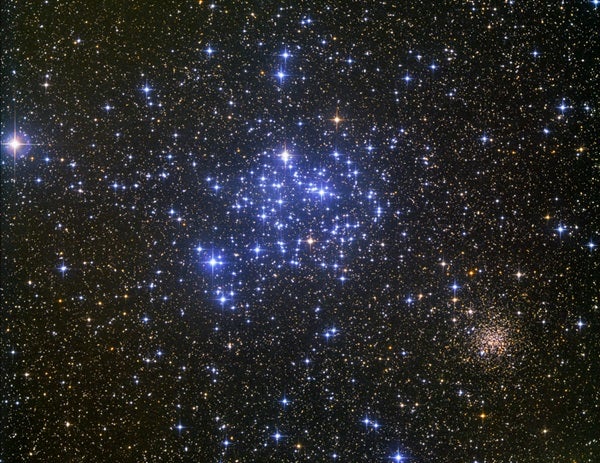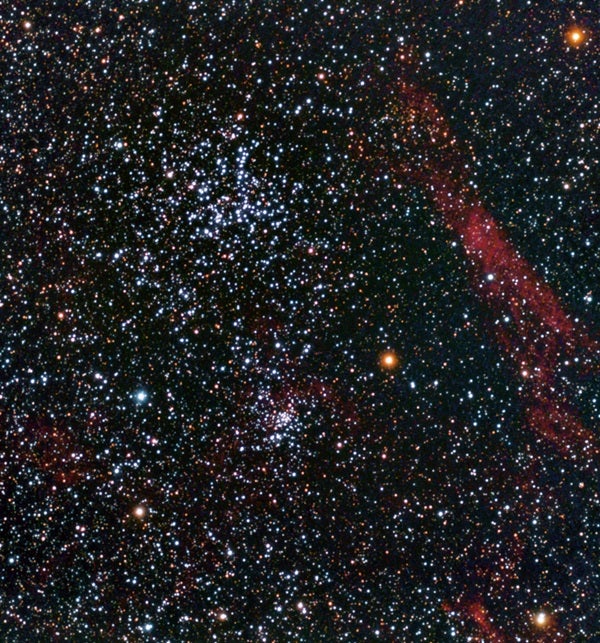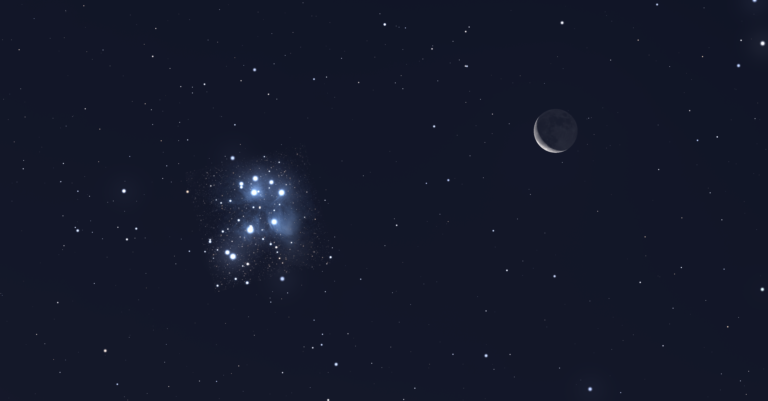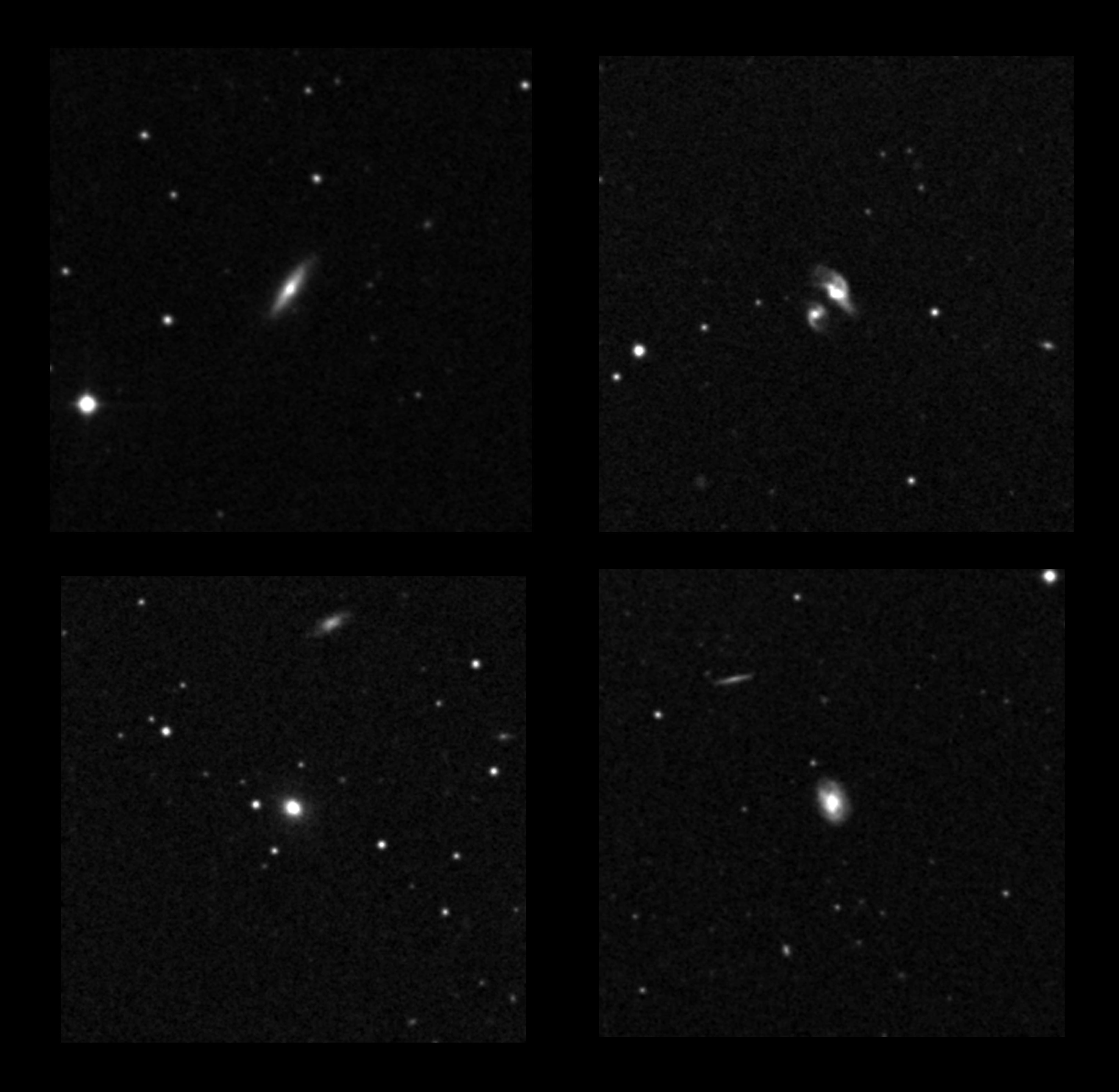Under a dark sky, they’re even a wonder to unaided eyes, appearing as fuzzy knots midway along the gentle sleeve of the Milky Way that stretches between magnitude 2.7 Ruchbah (Delta [δ] Cassiopeiae) and magnitude 2.9 Gamma (γ) Persei. While the Double Cluster stands alone in its brightness, symmetry, and grandeur, the night sky holds other examples of open star cluster pairings, though most are visual oddities at best.
Stately differences
I’ll start with the popular open star cluster M35 in Gemini and its “accidental companion,” NGC 2158. To the unaided eye, M35 is a good example of what a single component of the Double Cluster would look like shining on its own. This 5th-magnitude cluster spans nearly a Full Moon’s diameter of sky and appears as a mottled splotch of diffuse light just 2.3° northwest of Propus (Eta [η] Geminorum). Through binoculars, the view is a splendid sight because M35 ranks as one of the richest open clusters, having some 200 stars crammed into a field of view 30′ across.
Also, unlike the Double Cluster, whose components shared a common birth from the same cloud of dust and gas, M35 and NGC 2158 lie at opposite ends of the evolutionary scale, with the former being about 130 million years old and the latter being about a billion! Consider this when you take in little NGC 2158’s pale milky glow; the cluster’s stars may be a challenge to resolve through small telescopes because its brightest stars shine around 13th magnitude.
A near twin … but different!
M38 is one of three great open star clusters in Auriga. This 6th-magnitude denizen lies near the center of the Charioteer’s pentagram and bristles with some 300 telescopic suns in an area of sky no larger than 21′. As with M35, it too has a dim (magnitude 8.2) and diminutive (7′) companion, NGC 1907, which lies 33′ to the south-southwest.
Now imagine this. While NGC 2158 only appears greatly smaller than M35 — both clusters are actually about 30 light-years in true physical extent — NGC 1907 is, in fact, much smaller than M38; while M38 spans some 20 light-years, NGC 1907 stretches across only half that diameter. Like NGC 2158, its stars are dim, but the brightest shine around 11th magnitude, so you may have an easier time resolving some of it.
Finally, there’s one more thing to ponder. Studies of the motions of M38 and NGC 1907 through space suggest that while these clusters were born in different regions of the galaxy, their orbits have brought them together to experience a “flyby” close encounter.
As always, send your thoughts to sjomeara31@gmail.com.












